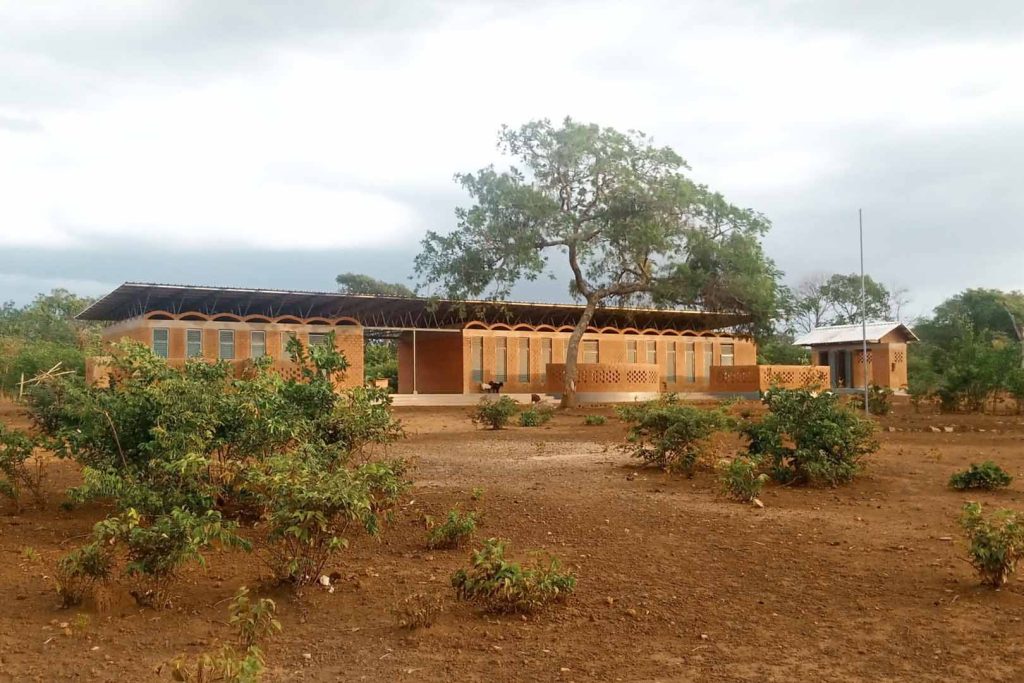This project aimed to improve the standard construction design of Guinean primary schools in terms of functionality, construction quality, and adaptation to local climatic constraints. A construction prototype for an elementary school was designed and realized. Another objective was to analyze to what extent the proposed construction methods, materialization, and participatory construction process, adapted to local conditions, can be applied in different parts of the country.
In the first construction phase, the classroom building, school administration, two lavatories, and a well were built. The design tried to adapt local spatial requirements to contemporary learning spaces and address regional and climatic construction challenges. One important principle was sourcing the building materials from the surrounding area as much as possible to minimize transport costs, promote the local economy, and teach locals to manage their available resources independently.
Cause
How could the standard school prototype, which has been built for many years in various regions of West Africa, be improved? The standard school has climatic and spatial disadvantages and does not follow any guiding principles of sustainable development. The key areas for improvement included relationships between indoor and outdoor space; quality of outdoor space; optimal lighting of classrooms; solidity and robustness; maintainability; adaptation to local climatic conditions; protection from solar radiation, heat, moisture, and acoustic disturbance; use of local building materials and techniques; and construction methods that local craftspeople could apply.
Method
Community activity is firmly anchored in Guinean society, so cooperation with the village community was an integral part of the project. Meetings with the village elders and all interested parties regularly took place to exchange information about the school buildings and the construction process. The location of the buildings on land that the community provided was decided together at the beginning of the planning. This close cooperation allowed local craftspeople and villagers to complete the school with the local architect after the universities had to leave the site because of the COVID-19 pandemic.
Impact
With the opening of the school, three times the number of students than originally planned were enrolled from the surrounding areas. The local school board explained this was due to a growing appreciation of education by all villagers because of the quality of the newly built school. The villagers arranged their own additional school benches and the use of informal classrooms. A second classroom building and sports field as well as housing units for teachers are planned for the long term. The extension will be coordinated by the local architect and built in cooperation with local craftsmen and the village community.

